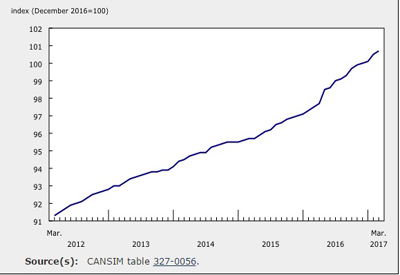Prove It: Troubleshooting Loss of Power on a Residential Service Call

Mar 4, 2021
By Lance Giesbrecht
Lance Giesbrecht is a master electrician and owner/operator of ELG Electric along with his wife, Melanie. The company services the Goderich, Ontario area’s residential, agricultural, and commercial industries.
“With our testing and measurement on the job, obviously every situation differs,” said Giesbrecht. We asked him to discuss his approach to troubleshooting electrical failures for a typical residential client, while also discussing the tools that he prefers to use.
Customer calls and has lost power to an outlet or fixture. However, the breaker is not showing tripped or a fault, and has been proven operational.
Our common practice is obviously narrowing down the search. Myself I use the Ideal Industries 3 light plug tester. Simple, easy, fast. We obviously test the outlet with the issue first. By opening the device plate and pulling the receptacle out of the wall we can test if the issue is local or ahead of the device. Here, using a digital multimeter (DMM) or a clamp meter with multi functions, I use the Ideal Industries Tightsight 660 Amp clamp meter. In my experience, it is the best and most functional meter. With this tester we would be looking to test for power (voltage AC “VAC”), between hot, neutral, and bond (ground for simplicity).
At this point, lets assume that the tests show there is no power at the device and that we need to look further upstream to find the issue.
We have two options with this circumstance, we can do a visual inspection of the room and work off of “best guess” and try our luck with random selection. We go to the nearest device and remove it from the wall as well. There, testing for VAC, we prove if it is on the same circuit as the problem receptacle (again this takes some tracing and tracking), and if it has power or not. If we have power, we make a note of it, if we don’t find power, we add it to the list of failed devices. From here we turn off the circuit and proceed to do a continuity test using the clamp meter (this is an audible test that allows us to prove if two points are of the same potential, meaning a continuous loop). With the circuit off, we test from wire to wire between the two boxes (the original failed receptacle and the next nearest used for testing), going one by one and then often a combination there of e.g. black-black, white-white, bare-bare then often touching the conductors to the box or “Ground” and testing them through to prove we have the correct wire.
This process from this end (option 1) can often solve the issue or lead us to the fault. If it does not show us in the first box, we would move to the next and so on. In this example there can be many culprits, from broken wire, failed device, loose connection, chewed connection, even burnt or melted connectors.
Another option to assist in the tracking and tracing of these types of faults is using the Ideal Industries SureTrace 959 tester. It is a must have for us. We use it on every lost power call. This tester was featured in the semi finals of the 2018 and 2019 Ideal Nationals. It is quite versatile and beyond helpful in many situations.
Option #2 in this scenario is the flip side of #1.
Starting at the panel end and working your way toward the fault. Again, here the issue becomes a poorly or improperly labeled panel that can cause loss of time with incorrect or misleading findings.
After troubleshooting the issue and finding the fault, the fun part begins, “SOLVING THE PROBLEM”. Sometimes it’s as easy as a connection repair, other times you have to refeed a receptacle circuit on the second floor of a beautiful $500,000 house without damaging the brand-new hard wood floors, scratching the fresh off white ceiling or creating a drywall job from basement to attic, all while trying to be cost effective and efficient in the eyes of your customer. And that is why I love my job and what I do.
I’d like to thank Ideal industries Canada for all of my troubleshooting tools and Milwaukee Powertools for making the repairs and construction portion seamless! And as always, our hometown electrical wholesaler Ideal Supply Goderich.
 Lance Giesbrecht is a Master Electrician and Owner/Operator of ELG Electric along with his wife, Melanie. Servicing the Goderich, ON area’s residential, agricultural, and commercial industries. Lance is an active member the in his local community and the broader electrical industry. He and his team have also competed in the Ideal National Championships, representing Canada’s fastest electricians.
Lance Giesbrecht is a Master Electrician and Owner/Operator of ELG Electric along with his wife, Melanie. Servicing the Goderich, ON area’s residential, agricultural, and commercial industries. Lance is an active member the in his local community and the broader electrical industry. He and his team have also competed in the Ideal National Championships, representing Canada’s fastest electricians.








![Guide to the Canadian Electrical Code, Part 1[i], 26th Edition– A Road Map: Section 12](https://electricalindustry.ca/wp-content/uploads/2022/11/Guide-CE-Code-2.png)






